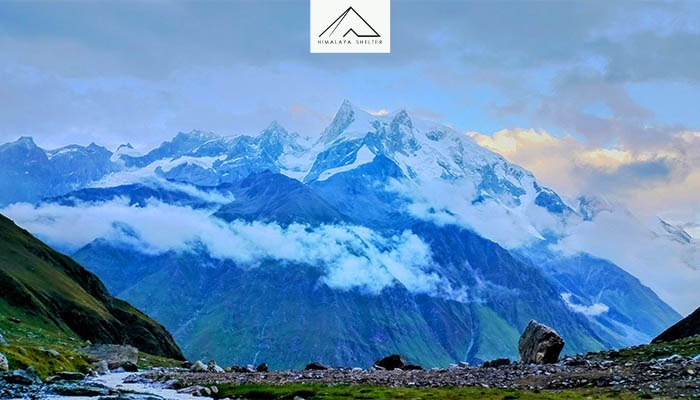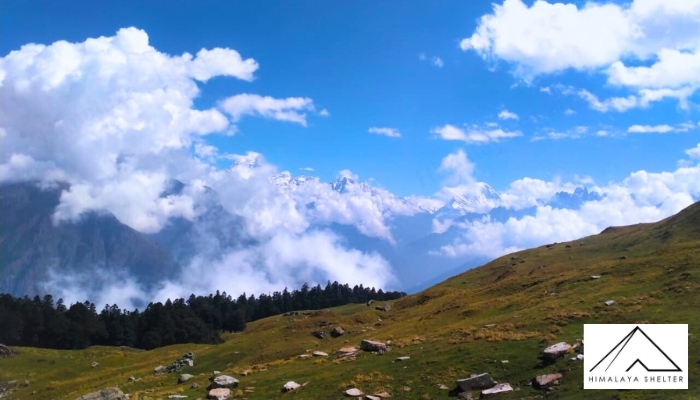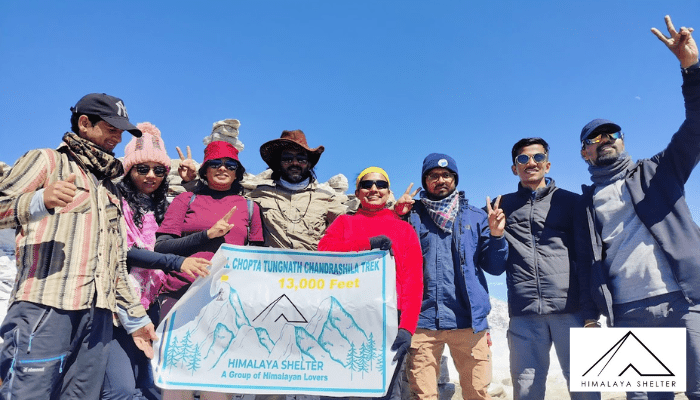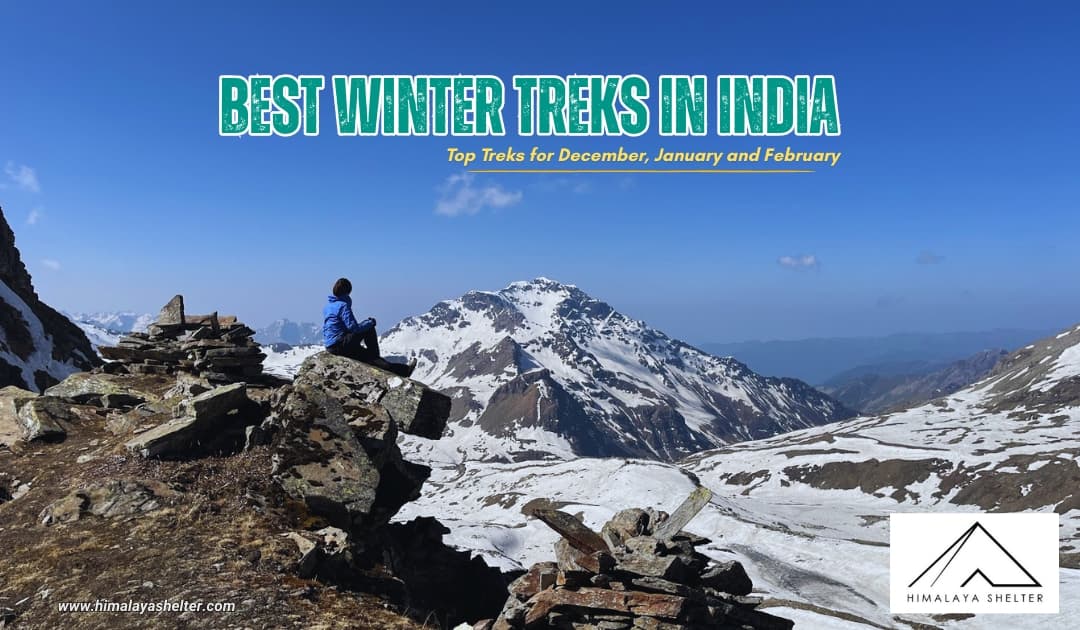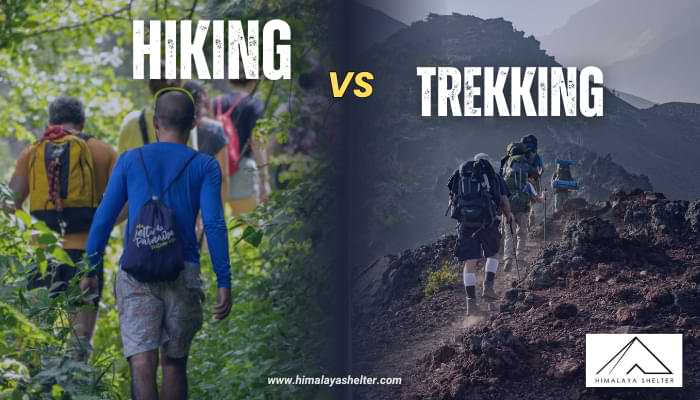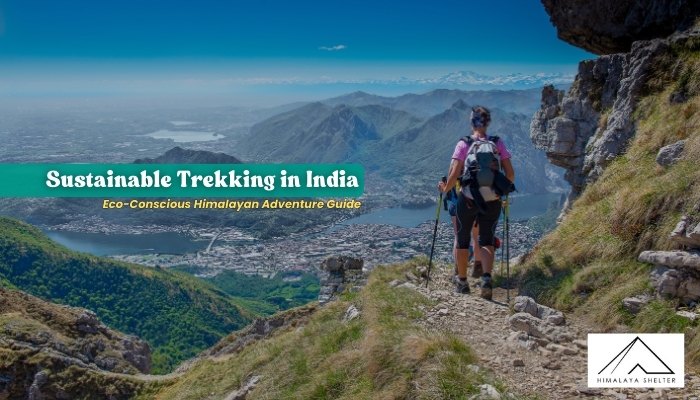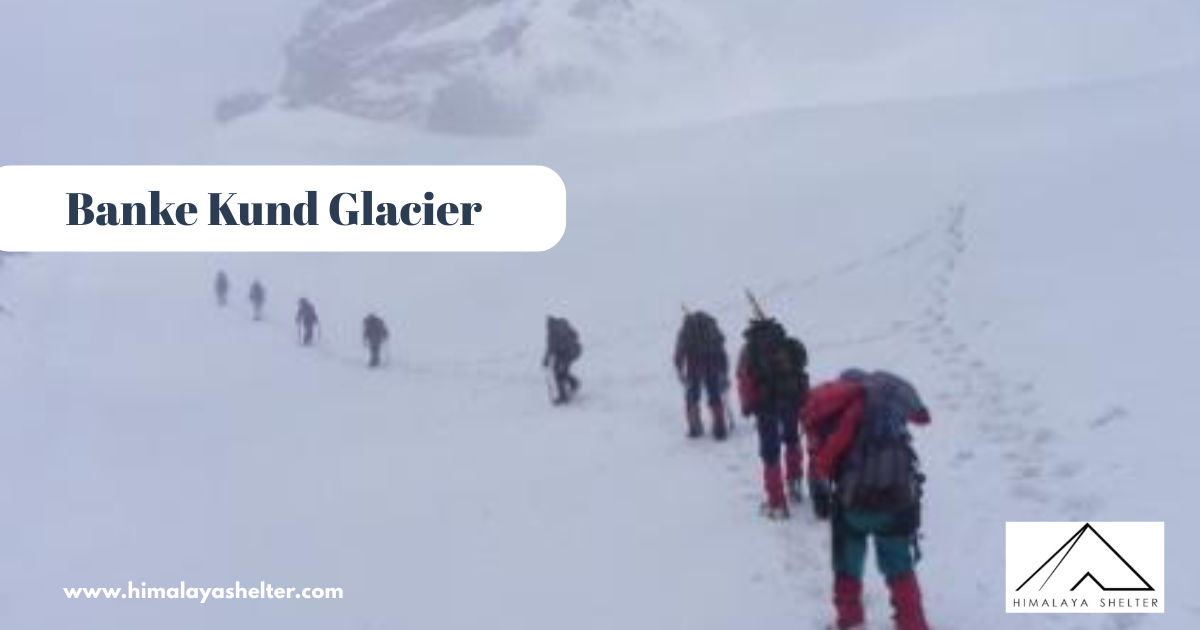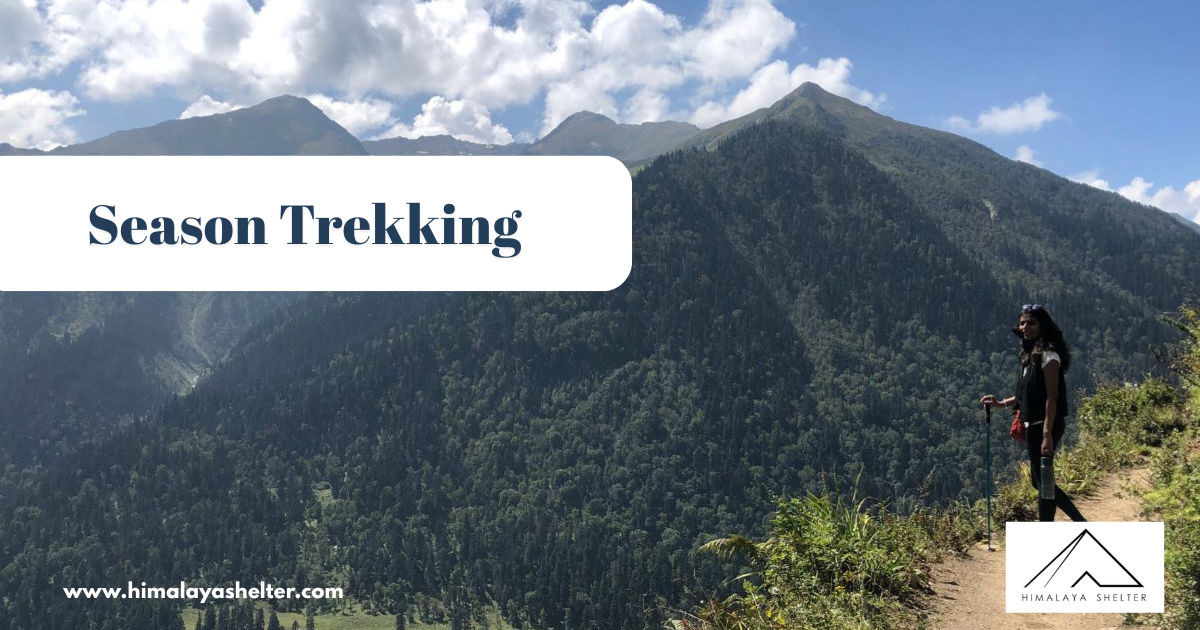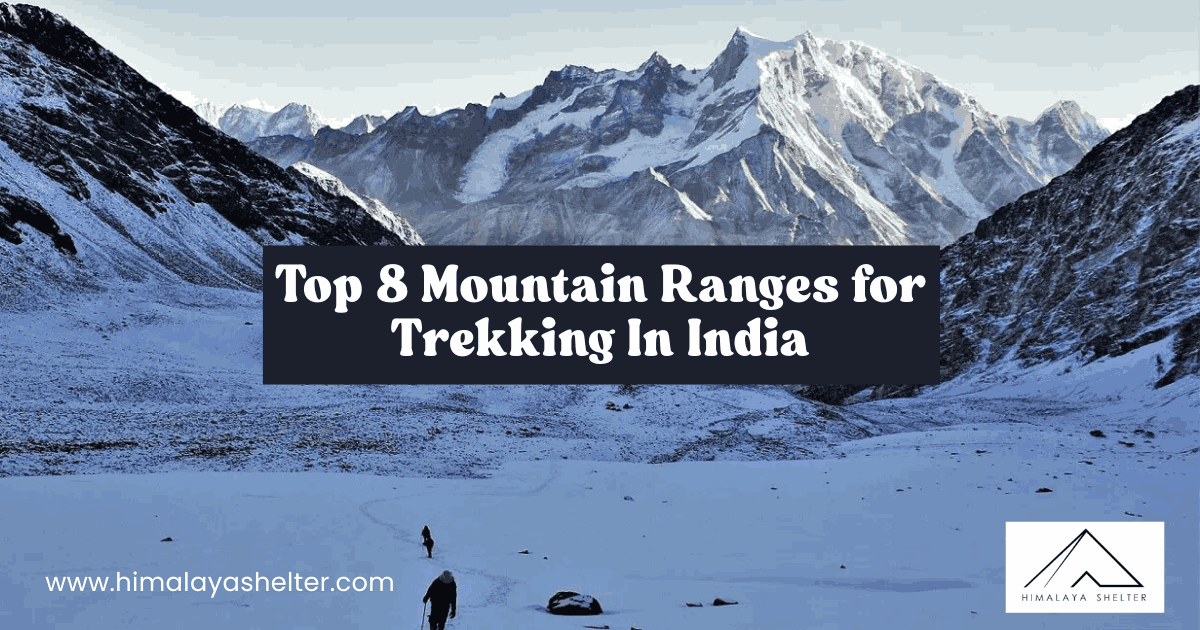
Kuari Pass Trek
TREK DIFFICULTY
Moderate
TREK DURATION
6 Days
HIGHEST ALTITUDE
12,532 feet (3,820 meters)
GROUP SIZE
12
TREK DISTANCE
28 Km
BASECAMP
Uttarakhand
BEST TIME
March to August and October to March
PICKUP POINT
Dehradun
Kuari Pass Trek Overview
The trek that carries the story of the British period. Lord George Curzon, the Viceroy of India. He had interest in exploring remote areas of Garhwal Himalayas, so he had explored Kuari pass Summit around the year 1905. For this reason this trail is also known as the Lord Curzon Trail. The Lord Curzon's Trail - The most magnificent Himalayan winter Trek in the Uttarakhand, this is no other than our Kuari Pass trek. It is not just known for its history, it is also known for its beautiful panoramas.
You can see many snow-covered peaks here. You see Nandadevi and Dunagiri. The huge Chaukhamba massif stands tall, its peaks shining in the sun. Neelkanth has a clear pyramid shape that grabs your eye. You also see the rough outlines of Mana, Kamet, and Hathi Ghoda. These mountains create a view that makes trekkers stop and stare. Trishul, with its three sharp tops, cuts across the sky.
The Nanda Ghunti range stretches along the horizon. It got this name because it looks like a broken nose. Honestly, Nanda Devi’s the undisputed queen out here. No other peak in Uttarakhand feels this grand when you see it rise above everything else. It is the second-highest mountain in India. It is truly a sight that commands respect. Dunagiri is a powerful mountain in its own right. It completes this amazing group of peaks. Each mountain makes the landscape look grand.
The Kuari Pass Trek is popular. People call it the Lord Curzon Trail. This trail is in the beautiful Garhwal Himalayas in Uttarakhand, India. It's a trek with moderate difficulty.
The trip takes about six days. You walk roughly 26 to 28 kilometers. The highest point is 12,532 feet (3,820 meters) up
Kuari Pass is a great journey in the Himalayas for beginners and intermediate trekkers who want to see beautiful mountains, peaceful alpine meadows and thick rhododendron woods. also It is the perfect mix of hard and easy trek.
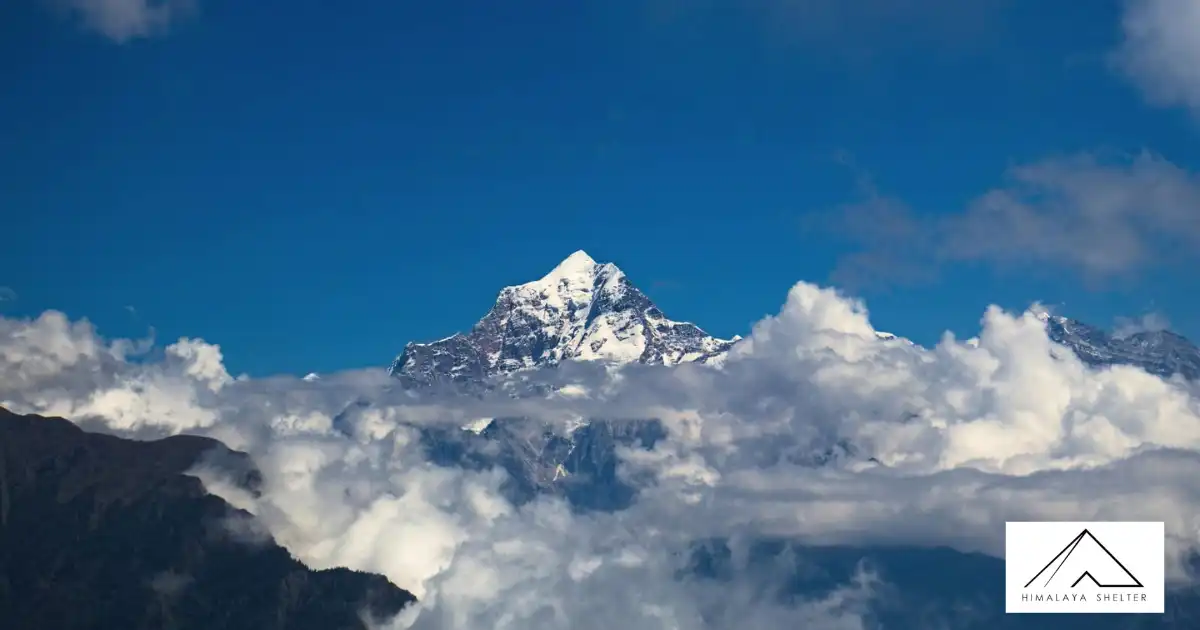
View From Kuari Pass
As trekkers navigate through the undulating terrain, they witness a shifting panorama of these mighty summits. At each turn in the path, a new perspective emerges, providing a fresh appreciation for the sheer scale and beauty of the Himalayas. The trail, though challenging at times, generously rewards with these spectacular views. Consequently, it creates an experience that lingers in memory long after completing the trek.
Day 1: Drive from Dehradun to Joshimath
Day 2: Drive from Joshimath to Dhak and Trek to Guling
Day 3: Trek from Guling to Khullara
Day 4: Trek from Khullara to Kuari pass and back to Taali
Day 5: Trek from Taali to Auli trek via Gorson Bugyal; Drive to Joshimath
Day 6: Drive from Joshimath to Dehradun
Points to Remember:
- Documents Required: Trekkers should carry a copy of the Aadhar Card (Indian National) or a copy of the Passport and visa(International Tourist) along with the Medical Certificate signed by a Doctor.
- Accommodation: Trek stays in an A-Shape tent/ North Face Tent. Built to withstand extreme weather conditions and, at the same time, make you comfortable after a hard day’s trek.
-
- Do not litter the Mountains. Kindly carry all the non-biodegradable bags with you and throw them in the dustbin.
- Please do not feed animals (especially dogs) with biscuits.
- Biscuits can cause health issues; their fur starts shedding, which makes it difficult for them to survive in the winter.
- Cloakroom: We have a cloakroom facility available for extra luggage. Every trekker is permitted to leave their luggage behind at no charge.
In Himalaya Shelter, we provide you with the option to customize your trekking experience. Whether you're a solo traveler, a group of friends, or a family, you can opt for our personalized tailor-made trekking program. This customized trek will be exclusively designed for you, taking into account your specific requirements for transportation, accommodation, meals, and any other premium facilities you may need during the trek. No other participants will be added to your group. Choosing a customized trek will enable you to fully enjoy the trek with your loved ones. Click here to learn what a Customized Trekking program looks like.

- Khullara Campsite: This Khullara campsite itself is a beautiful part of the trek. The tent is pitched on open meadows which are surrounded by oak and rhododendron forests. As you zip out the tent you will have the best views of Dronagiri and Hathi Gauri parvat, especially in the evening with the sunset light that glows in orange color.
- Lord Curzon’s Trail: As you climb from Khullara, you walk on meadows then the trail comes is Lord Curzon’s trail. That trail has history but also has a view from the trail. As you cross the stream you see a narrow valley in which the stream continuously flows.
- The Summit: From the summit of Kuari Pass you will see different mountains in each four directions, Mt Nandadevi, Mt Kamet, Chaukhamba massif, Trishul and many other peaks.
- Gorson Meadows: After Tali, the trail opens into Gorson Bugyal. It feels like endless grassland. There you will hear bells, as mules, horses and cows eating grass. This Gorson bugyal has flowers in Spring and snow sheets in winter.
- Tali Campsite: This Tali campsite is very calm and quiet. You hear the chirpings of birds and can even watch birds. The lake tali seems very quiet and in winter it gets freezing and that looks amazing.
- Views of Nanda Devi: Obviously, Mt Nanda devi is the main character of the trek. People often separate to only witness her. And also she often remains hidden behind the clouds. She looks like a goddess itself.
The difficulty level of the Kuari Pass trek is easy to moderate; the altitude of the pass is 12,500 ft. One has to walk 5 to 6 hours each day with gradual ascents and descents. At last, when it reaches very near to the summit, it is steep and can make you tired. But the trek is beginner-friendly and safe.
But in winter it can be tough. If you are fit, or have basic fitness, it can make the trek easy. And it is still easy for experienced trekkers.
Reach to Kuari Pass Trek from Various Places
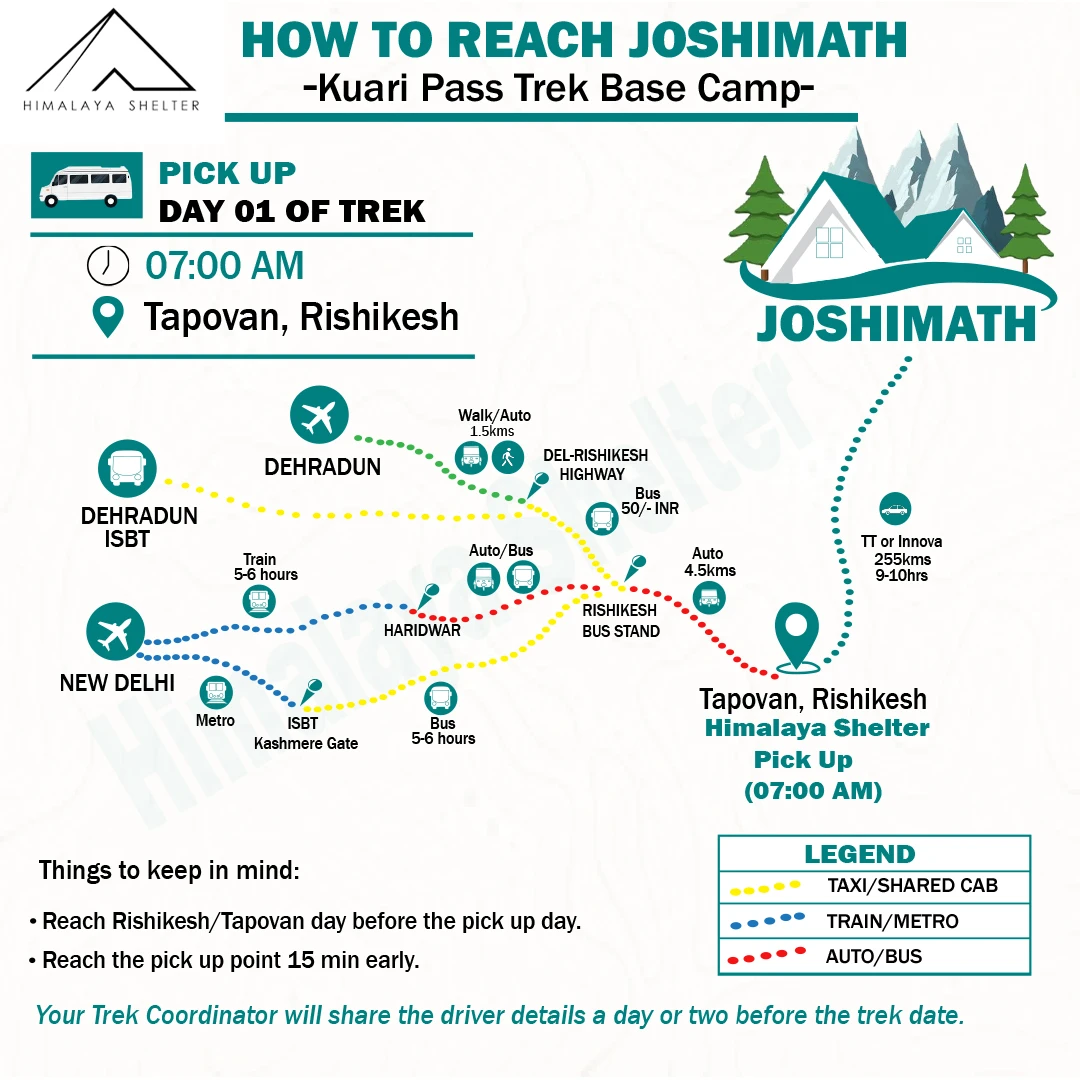
How to reach the joshimath to kuari pass base camp
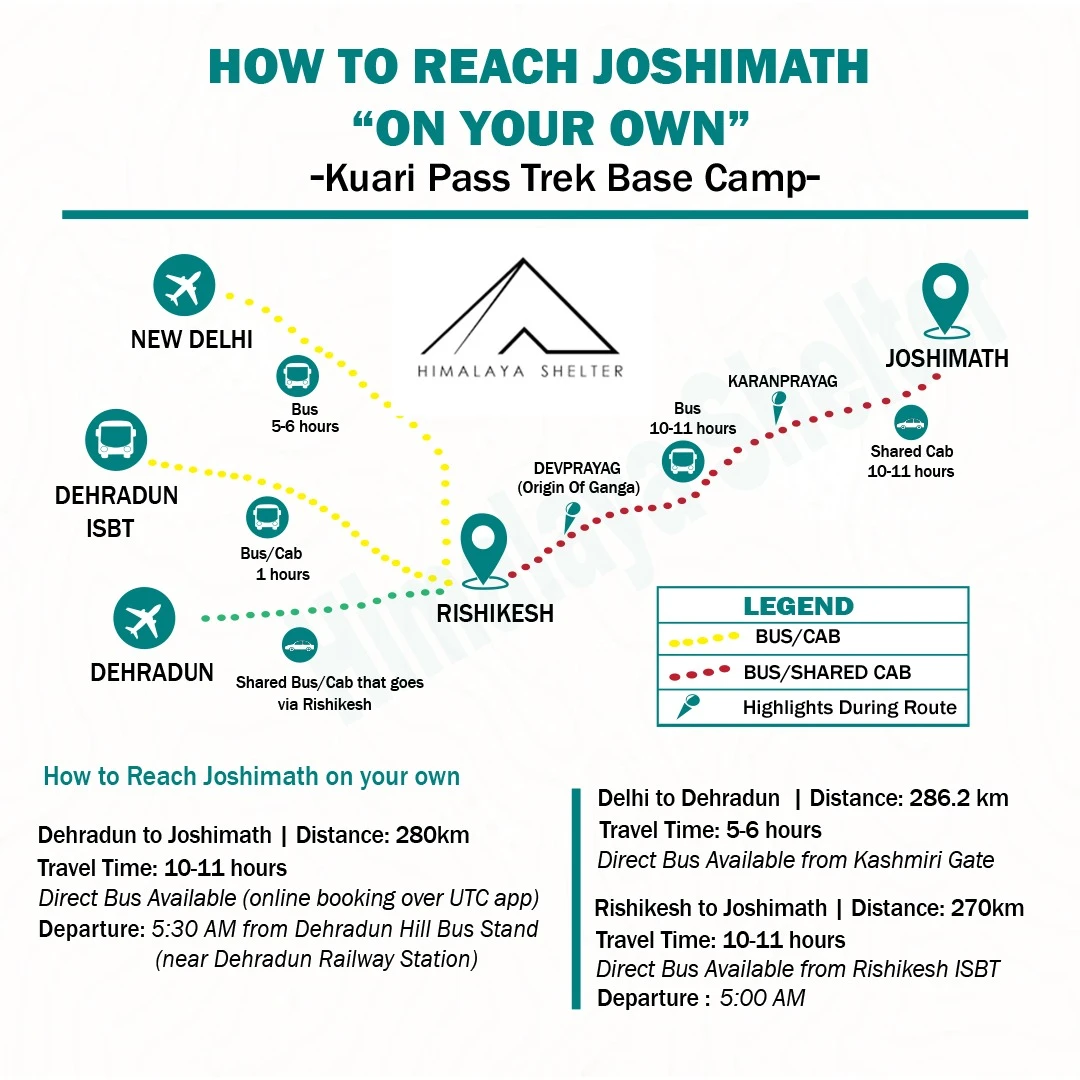
How to reach the joshimath to kuari pass base camp "On Your Own"
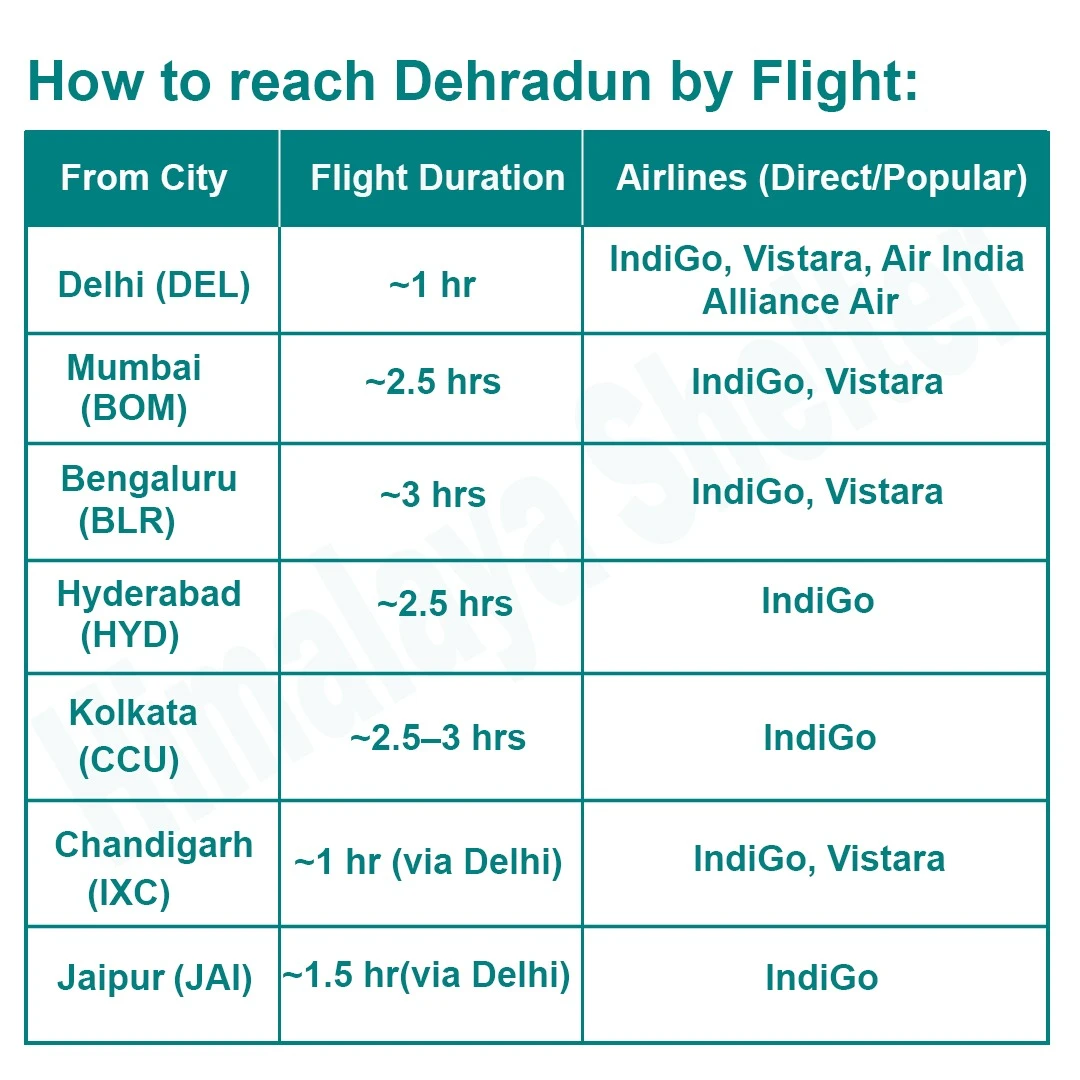
How to reach Dehradun by Flight
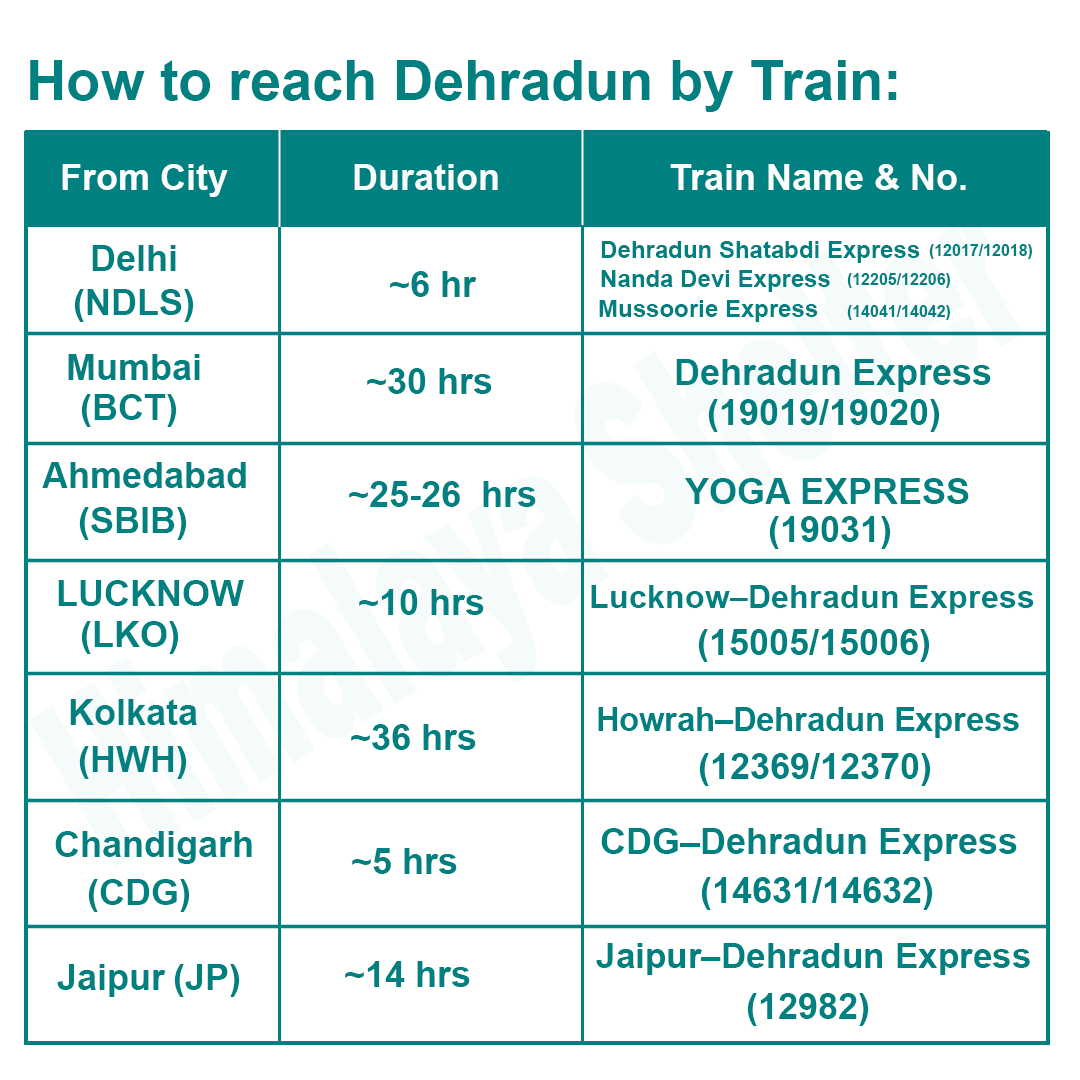
How to Reach Dehradun by Train
From Delhi:
- By Road: The distance from Delhi to Kuari Pass starting point (Joshimath) is approximately 476 km via NH-7 and 512 km via NH-334. Traveling by bus, taxi, or self-driving are all viable options. The bus journey takes about 12 to 14 hours, while a taxi ride typically spans 11 to 12 hours. If you plan to self-drive, ensure you check road conditions beforehand.
- By Train: There isn't a direct train route from Delhi to Joshimath. You can take a train to either Haridwar or Rishikesh and then proceed by bus or taxi to Joshimath.
From Dehradun:
- By Road: The road distance between Dehradun and Joshimath is approximately 290 km. You have the option to travel by bus, taxi, or self-drive. The bus journey takes around 9 to 10 hours. If you choose to self-drive, do check road conditions prior to departure.
- By Train: Similar to Delhi, there's no direct train route from Dehradun to Joshimath. You can take a train to Haridwar or Rishikesh and then proceed by bus or taxi to Joshimath. The train journey to Haridwar or Rishikesh takes approximately 2 to 3 hours.
From Rishikesh:
- By Road: The road distance between Rishikesh and Joshimath is approximately 270 km. You have the option to travel by bus, taxi, or self-drive. The bus journey takes around 7-8 hours, while a taxi ride usually takes 5-6 hours. If you plan to self-drive, ensure you check road conditions beforehand.
From Auli:
- By Road: The road distance between Auli and Joshimath is approximately 13 km. You can opt for a taxi or shared jeep to reach Joshimath, which takes approximately 30 minutes.
These starting points offer different routes to embark on the Kuari Pass Trek, each with its own scenic journey and varying travel durations. Before your trip, make sure to verify road conditions and transportation availability for a smoother and more enjoyable adventure. Safe travels!
The Kuari Pass Trek is like a beautiful journey through different chapters of nature's storybook. Every season paints a unique picture on this trail, making it an adventure worth experiencing. Let's take a closer look at what each month brings:
March-April:-
- Weather: During the Kuari Pass Trek in March and April, the weather is usually pleasant. The sun shines gently, and sometimes there might be a little rain shower to freshen things up.
- Scenery: During this time, the meadows turn into a lush sea of green. It's like nature's canvas coming to life with a burst of colorful wildflowers.
- Temperature: Temperatures along the Kuari Pass in the daytime usually range from 10 to 15 degrees Celsius, with nights being cooler, typically between 0 and 5 degrees Celsius. It's important to bear in mind that temperatures may vary with altitude, and higher elevations often entail colder conditions.
May-June:-
- Weather: May and June bring warmer days. The sun shines bright, making it a perfect time for exploring.
- Scenery: Spring is in full swing, and the meadows and slopes explode in a riot of colors. It's like walking through a living painting with rhododendrons and alpine blooms cascading down the hillsides.
- Temperature: In May and June, the Kuari Pass Trek sees warmer weather compared to March and April. Daytime temperatures typically range from 15 to 20 degrees Celsius, while nighttime temperatures hover between 5 to 10 degrees Celsius. Nevertheless, it's important to note that at higher altitudes, temperatures can still drop below freezing during the night.
July-August:-
- Weather: Monsoon brings a refreshing change. The rain washes the landscape, creating a vibrant and almost dream-like beauty but avoid trekking in Kuari Pass during the monsoon season due to the occasional showers, slippery trails, and landslides.
- Scenery: The monsoon turns the region into a lush, green paradise. Waterfalls cascade down the slopes, and the forests become a haven for a variety of plants and animals.
- Temperature: The temperature in Kuari Pass Trek during the month of July-August is generally warm and humid, with average daytime temperatures ranging from 20 to 25 degrees Celsius and average nighttime temperatures ranging from 10 to 15 degrees Celsius. However, the temperature can vary depending on the altitude and the weather conditions.
September-October:-
- Weather: September and October welcome trekkers with clear skies and cool, refreshing air. It's the perfect weather for an invigorating trek.
- Scenery: The meadows turn golden as autumn sets in. The landscape is dotted with golden leaves, creating a picturesque view against the towering peaks.
- Temperature: In September and October, daytime temperatures along the Kuari Pass Trek typically range between 10 and 15 degrees Celsius, while nights tend to be cooler, with temperatures between 0 and 5 degrees Celsius. It's worth noting that temperatures may fluctuate with altitude, with higher elevations often experiencing colder conditions.
November-February:-
- Weather: Kuari Pass weather in winter brings a calm, snowy blanket to the region. The air is crisp, and the landscape shimmers in the gentle winter sun.
- Scenery: The meadows and slopes transform into a sparkling, snow-covered wonderland. The quiet of the winter landscape adds a touch of magic to the trekking experience.
- Temperature: The temperature in Kuari Pass Trek during the month of November-February is cold, with average daytime temperatures ranging from 5 to 10 degrees Celsius and average nighttime temperatures ranging from 0 to -5 degrees Celsius. However, the temperature can vary depending on the altitude, with the higher altitudes being colder.
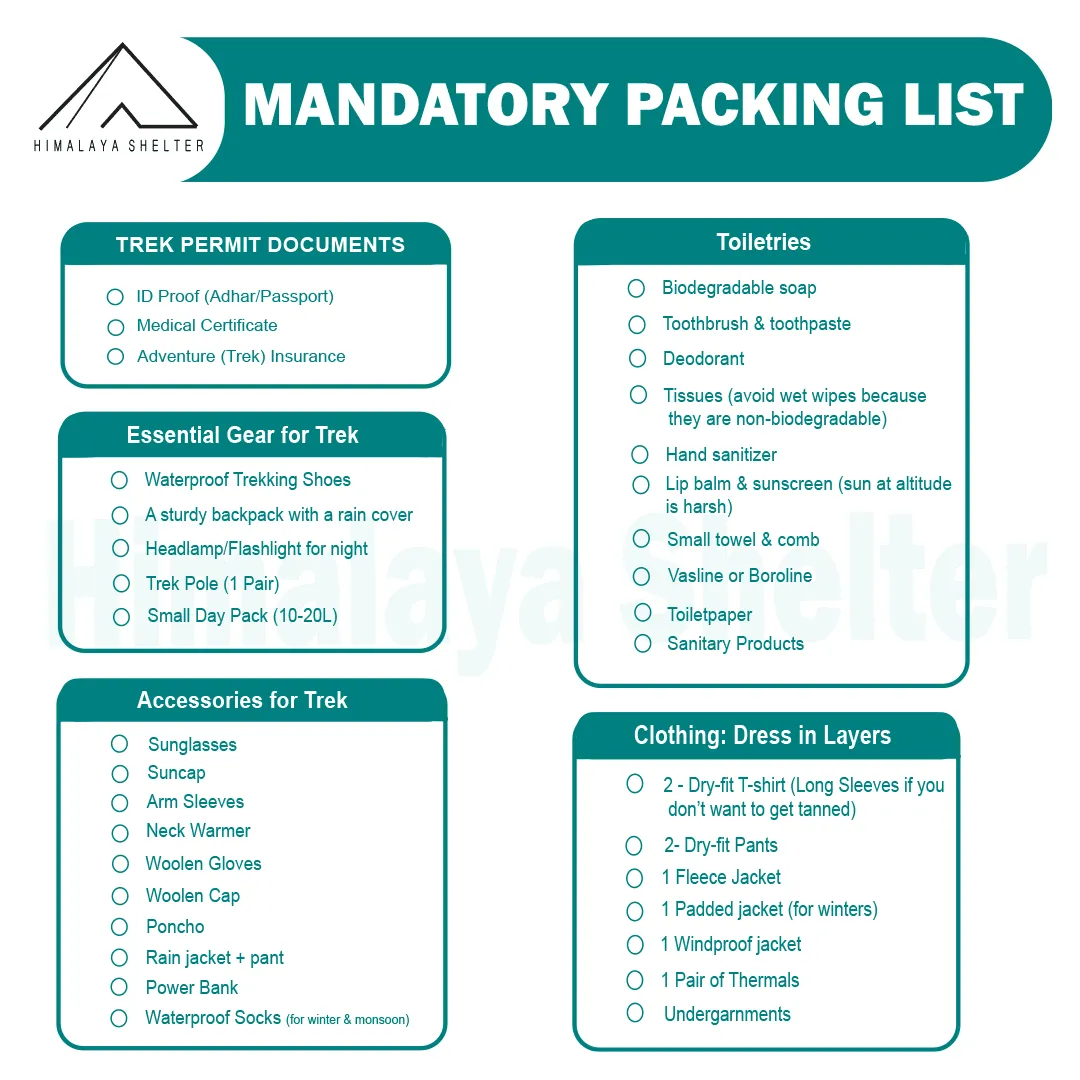
Mandatory Backpacking list for Kuari Pass
Notice: All trekkers are strictly advised not to carry unnecessary plastic items such as disposable bottles, single-use cutlery, polythene bags, and food wrappers during the trek. We encourage the use of reusable bottles, tiffin boxes, and cloth bags to minimise waste and protect the fragile Himalayan ecosystem. Your cooperation is essential in ensuring a clean and sustainable trekking experience
How to Pack Smart for the Kuari Pass Trek
Before you go on the Kuari Pass Trek, a backpack is important. For a smooth trek and to enjoy your trek without any worry, it is important to pack your bag properly. Wrong packaging can turn your trek into the worst. Here’s a simple guide to help you get it just right.
Must-Carry Documents
Before you go on any trek, keep this:
- A valid ID proof (Aadhar card, driving license, or passport)
- Medical fitness certificate
- Adventure insurance—for peace of mind in the mountains
Accessories You’ll Need
- A sturdy backpack with a rain cover
- Waterproof trekking shoes (your feet will thank you!)
- Trekking poles for balance
- Sun cap & sunglasses to fight the glare
- Headlamp/flashlight for dark trails
- Lunchbox and water bottle
- A route map and keep an eye on the latest weather update
- A camera to capture memories
- Power bank
Toiletries (Think Hygiene & Comfort)
- Biodegradable soap
- Toothbrush & toothpaste
- Deodorant
- Tissues (avoid wet wipes because they are non-biodegradable)
- Hand sanitizer
- Lip balm & sunscreen (sun at altitude is harsh)
- Small towel & comb
Clothing: Dress in Layers
In the Himalayas proper layering is important. Layers are your protectors. Stick to light, quick-dry, warm, and waterproof clothing.
Spring, Summer & Monsoon:
- 1 trek pant
- 1 lightweight shirt
- 1 fleece sweater
- 1 poncho
- Nylon innerwear
Autumn & Early Winter:
- 1 trek pant
- 1 thermal set
- 1 t-shirt
- 1 fleece sweater
- 1 padded jacket
- 1 poncho
Peak Winter:
- 1 trek pant
- 1 thermal set
- 1 t-shirt
- 1 fleece jacket
- 1 padded jacket
- 1 windproof jacket
- Waterproof gloves
Extra basics for all treks:
- 3 t-shirts (wear one, carry two)
- 2 pairs of thermals (wear one, carry one)
- 2 quick-dry pants (wear one, carry one)
- 3 pairs of socks (wear one, carry two)
- 2 pairs of gloves (wear one, carry one)
- 1 padded jacket (always keep it handy for sudden chills)
Medical Kit
Some essential things:
- Bandages & antiseptic wipes
- Pain relievers
- Personal prescription medicines
- Altitude sickness tablets
- Blister care kit (trust me, blisters can ruin a trek)
Physical Fitness Preparation for Trek:
To overcome the difficulty level of Bali pass trekking, it requires strong cardiovascular endurance, muscular strength, and overall physical fitness. Incorporate these exercises into your routine to increase strength, stability, and stamina, which will help you tackle difficult terrain sections of the trail at high altitudes.
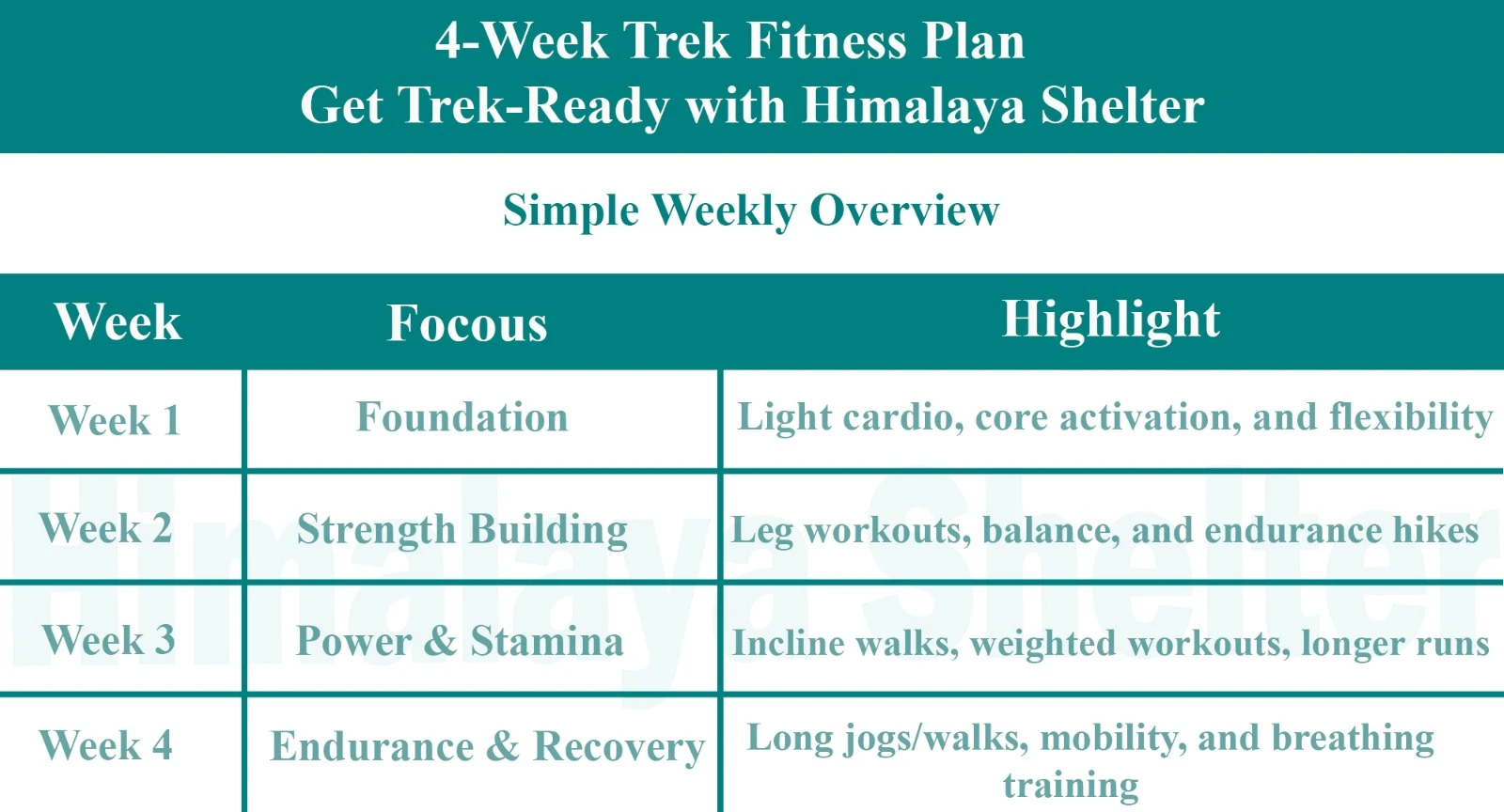
Overview

Foundation
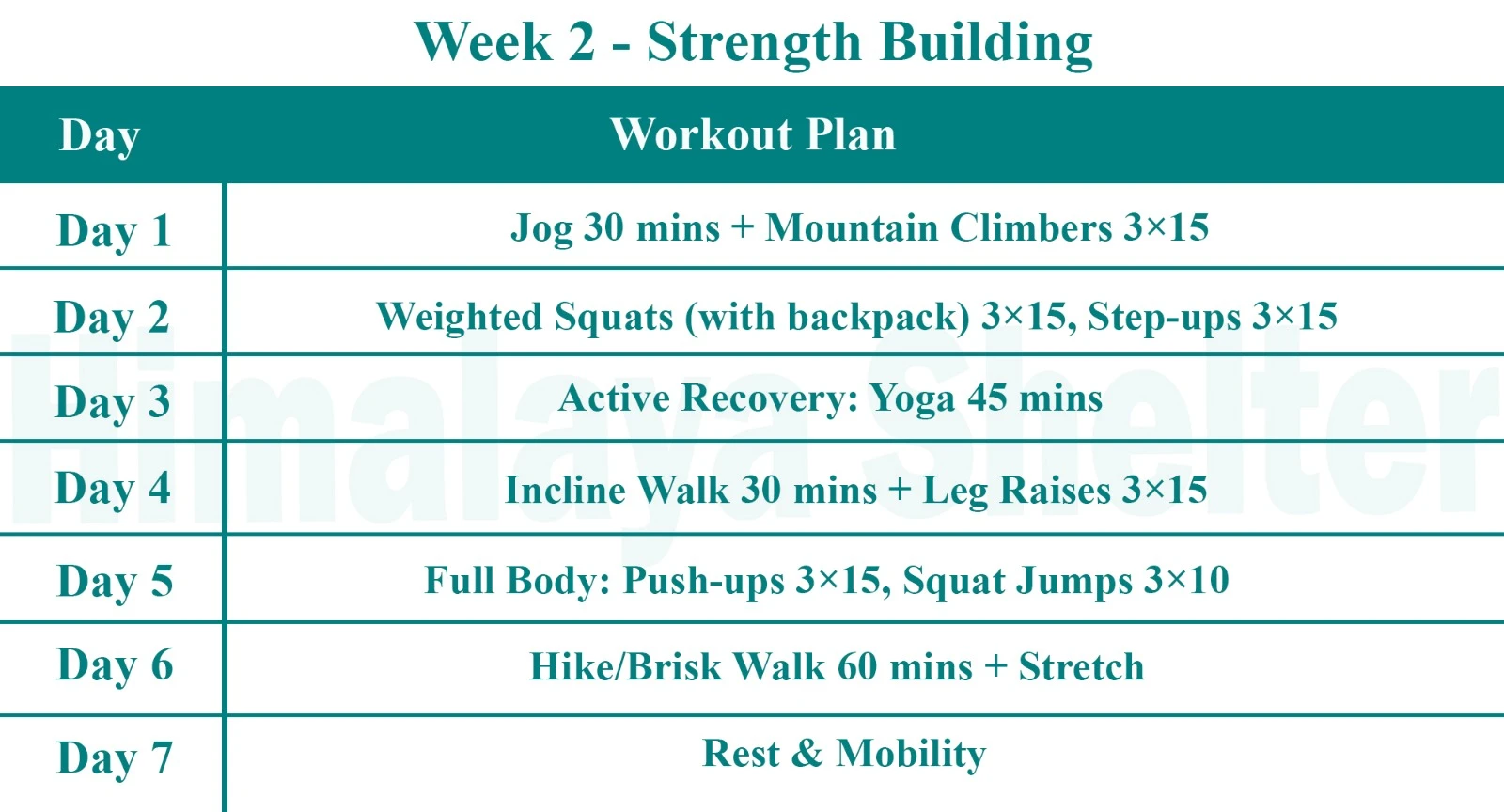
Strength Building
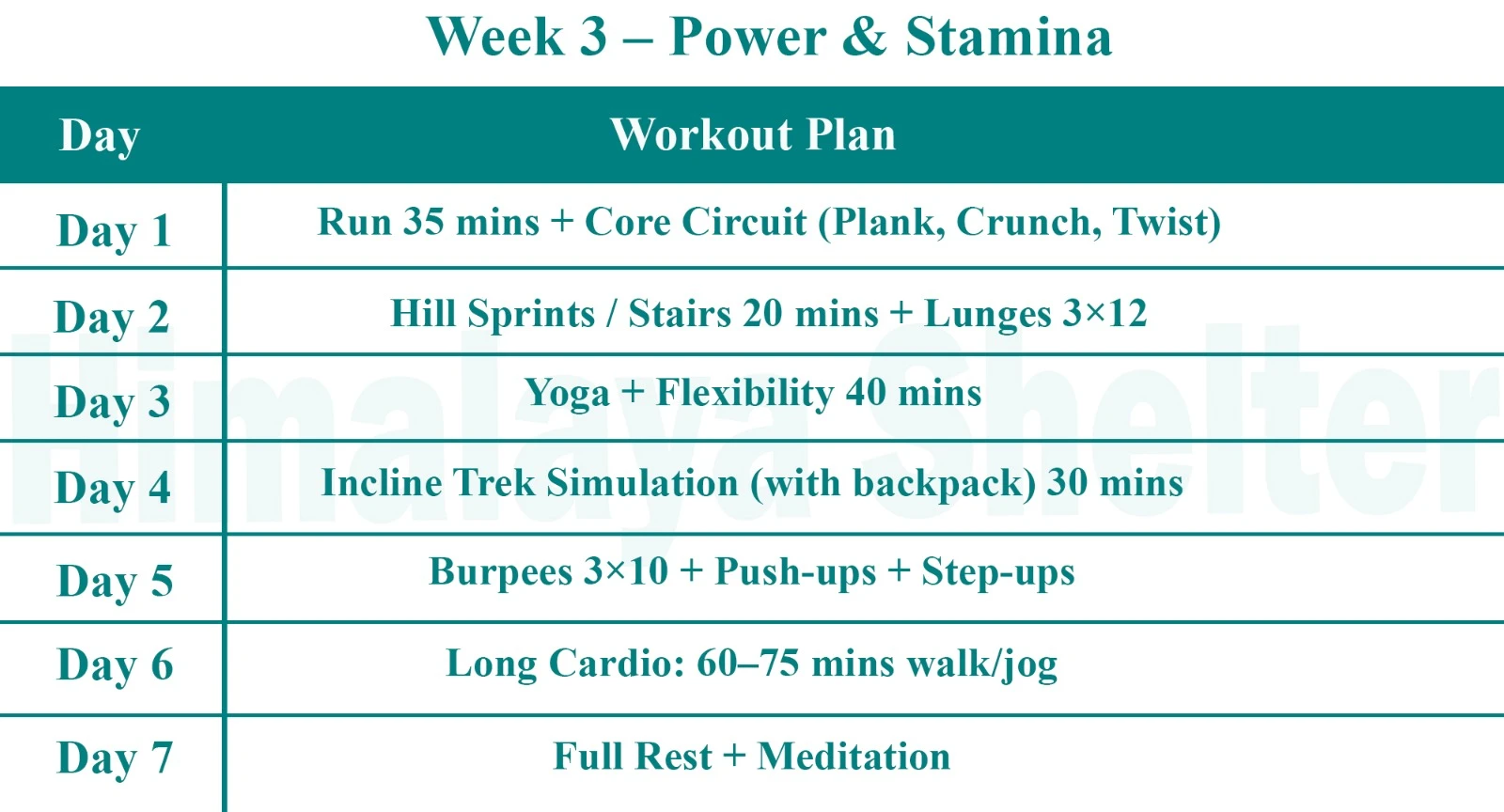
Power & Stamina
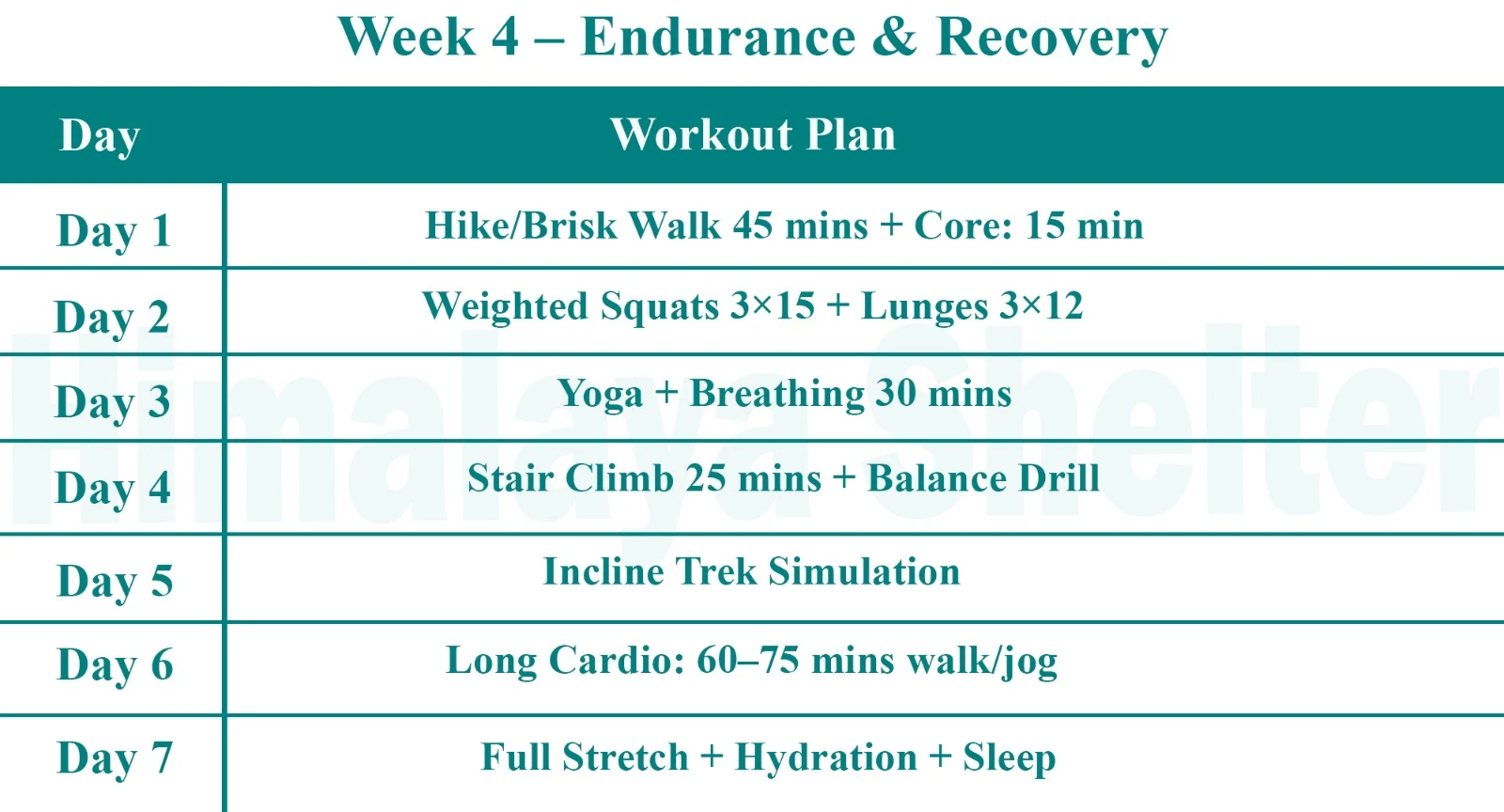
Endurance & Recovery
Day 1: Drive from Dehradun to Joshimath
Drive: 290 km; 8-9 hrs
Altitude: 2,100 ft (640 m) – 6,150 ft (1,875 m)
Accommodation: Hotel/Resort
Meals: Dinner
We commence our journey from Dehradun around 6:30 am, aiming to arrive in Joshimath by evening. The drive will lead us through several towns of great significance, such as Rishikesh, Srinagar, Devprayag, and Rudraprayag, two of the renowned Panchprayags, each holding its own religious and spiritual importance. Upon reaching Joshimath in the evening, we will check into our hotel. This is where we’ll make final preparations for tomorrow’s trek, ensuring that we are fully ready for the adventure ahead.
Day 2: Drive from Joshimath to Dhak and Trek to Guling
Drive: 7 km, 15 min
Trek: 5 km, 3 hrs
Altitude: 6,150 ft (1,875 m) – 6,890 ft (2,100 m) – 9,186 ft (2,800 m)
Accommodation: Camping (Alpine Tents)
Meals: Breakfast + Lunch + Evening Snacks + Dinner
After breakfast, we drive to Dhak, towards the road to Tapovan. The trek begins from Dhak. The trail goes uphill towards our right away from the road. Over half of the path is open and without shade. We pass two villages on the way. We enter a forest about a kilometre before reaching the campsite of Guling. The camp has views towards the peak of Dunagiri. We can enjoy the tranquillity and natural beauty of the place once we arrive at the campsite.
Day 3: Trek from Guling to Khullara
Trek: 5 km, 4 hrs
Altitude: 9,186 ft (2,800 m) – 10,990 ft (3,350 m)
Accommodation: Camping (Alpine Tents)
Meals: Breakfast + Lunch + Evening Snacks + Dinner
Like in previous days, we will have a healthy breakfast in the morning and begin our today’s trek. The trail today has a gradual slope up. We walk among Oak, Rhododendron, Himalayan Birch and Pine forests. Khullara is an open meadow with astounding views of surrounding peaks like Dunagiri, Hathi and Ghodi, Nanda Devi, Trishul, Kamet, Mana, Nilgiri. We will set up our campsite at khullara and stay there for tonight.
Day 4: Trek from Khullara to Kuari pass and back to Taali
Trek: 10 km, 6 hrs
Altitude: 10,990 ft (3,350 m) – 12,532 ft (3,820 m) – 11,515 ft (3,510 m)
Accommodation: Camping (Alpine Tents)
Meals: Breakfast + Lunch + Evening Snacks + Dinner
We will have an early breakfast and start walking uphill towards the pass. We will reach a ridge, cross it and take a left. The path leads us away and towards our right to the pass. We spend some time here and then head back along the same way till we reach the ridge again. From here instead of heading down towards Khullara, we walk along the ridge towards Taali. We reach a small hillock with flag, named Chitrakantha. From here we get This spot has stunning panoramic views. We can see the peaks including Chaukhambha, Neelkanth, Mana, Hathi, Ghodi and Dunagiri. We walk down the other side and proceed towards our campsite. Taali is located inside the forest and is closed from all sides.
Day 5: Trek from Taali to Auli trek via Gorson Bugyal; Drive to Joshimath
Trek: 7 km, 3-4 hrs
Drive: 7 km, 15 min
Altitude: 11,515 ft (3,510 m) – 6,150 ft (1,875 m)
Accommodation: Hotel/Resort
Meals: Breakfast + Lunch + Evening Snacks + Dinner
On this day, the walk is easy. The forest clears away soon. We pass by Taali Lake, which is often frozen in winter. As we keep traversing towards Auli, the view of Nanda Devi peak becomes clearer towards our back. After crossing Gorson Bugyal, a large meadow, we enter a forest. A short walk further, the skiing destination of Auli presents itself. A vehicle will take us back to Joshimath from here where we will check into the Hotel.
Day 6: Drive from Joshimath to Dehradun
Drive: 290 km, 9-10 hrs
Altitude: 6,150 ft (1,875 m) – 2,100 ft (640 m)
Meals: Breakfast
We leave from Joshimath and reach Dehradun by early evening.
Our treks are specially designed by the experienced team at Himalaya Shelter, taking you on an adventure of a lifetime all while making you connect not only with the bountiful nature but also with yourself and with others on the trek with you creating wonderful memories which will last you a lifetime. All Himalaya Shelter treks are guided by experienced Trekkers having vast knowledge and experience of the region, providing with insightful information and stories pertaining to the region’s flora and fauna and the history of the region whilst the trek. It is safe to say that on successfully completing the trek, one will gain tremendous insight and experience along with lifetime memories.
Inclusions
- Transportation – Transport Support from Dehradun from Day 1 to Day 6 (Pickup time: 7:30 am, Prince Chowk, near Dehradun Railway Station)
- Accommodation – At Base Camp, stay at a local homestay or guest house for one night each, which will give you an insight into the authentic lifestyle of the locals.
On Trek stay in a 2-person Vango Halo Pro/A-Shape tent, which is to be shared by two trekkers, built to withstand extreme weather conditions and at the same time making you comfortable after a hard day’s trek. - Camping Equipment – specially designed sleeping bags that can withstand harsh weather conditions, foam mattresses. Other safety gear like microspikes, gaiters, an ice axe, and helmets will be provided.
- Medical Kit – our team will be equipped with an extensive medical kit, which our team is trained and experienced to use. Oxygen cylinders are used after they are thoroughly inspected throughout the Trek. Even campsites have large oxygen cylinders as backups.
- Permission - Forest entry charges for Indian nationals (Additional charges will be applicable for international tourists)
- Meals – Breakfast, packed lunch (on trek days), evening snacks, and dinner will be served. A hearty, delicious, and nutrition-filled Veg meals with egg preparation will be provided throughout the trek. (Jain and Vegan Food can also be arranged on prior notification.)There will be a dedicated Kitchen Tent along with a dining tent, which will have a dining table too.
- Our Team – A highly experienced and AMC-certified Trek Leader who will help ensure that the entire trek goes smoothly and safely while navigating the challenging conditions during the trek, and is skilled enough to navigate any medical emergency that can arise during the trek. Local and route Guides who are well-versed with the region and provide an in-depth insight into the local customs and knowledge of the flora and fauna endemic to the region. A dedicated Kitchen staff, which includes a Cook, a helper, and other support staff. There will also be porters and mules to carry common equipment.
- CLOAKROOM - We have a cloakroom facility available for extra luggage. Every trekker is permitted to leave their luggage behind at no charge.
Exclusions
- Personal expenses like tips, personal medicines, phone calls etc.
- Travel Expenses - Travel expenses from your hometown to the mentioned Pick-Up Point are not included in the trek fee.
From the scheduled pick-up spot to the base camp, we have our own fleet of vehicles like Bolero, Innova, Dezire, or Tempo Traveler (12-seater). This is be shared by trekkers for a pre-decided amount. All vehicles are non-AC. - Personal Equipment - Any personal gear like jackets, shoes, cutlery, or backpacks are not included in the trek fee. We recommend renting them from our Rental Store for an affordable fee. This can be pre-arranged to avoid last-minute hang-ups.
- Offloading - We encourage carrying your backpack to get into the true spirit of trekking. However, if needed, you can opt to offload your personal luggage of up to 12 kgs for an additional cost of INR 350 per bag per day.
- Trek Insurance - A mandatory trek insurance fee is charged in addition to your trek fee. Since most medical insurance doesn’t cover adventure activities, trek insurance offers essential coverage, enhancing your safety without a significant financial burden.
- Buffer day on the trek - We have kept a buffer day on the trek to account for any weather-related delay. If this is utilized, you will need to pay an extra amount to your trek leader.
- Anything apart from inclusions
- Please carry a lunch box for a packed lunch/breakfast to avoid using polythene and Aluminium foil.
Keeping the Himalayas clean is our own responsibility. Reduce the use of Plastic when you are in the abode of the Sacred Himalaya. 🌱
The last ATM is in Joshimath which is a big city in Uttrakhand. A simple google search will reveal the nearest ATM in your location.
For minor issues, the nearest medical care can be found in Joshimath and Chamoli. However, for major emergencies, the nearest hospital is in Srinagar or Dehradun which is an 8-9 hours drive from the basecamp.
The Himalayas serve as an excellent walking destination for people visiting for the first time. The path provides memorable rewards by combining forest paths with ridge ascents and the exciting ascent to Kuari Pass as part of its moderate difficulty. Future memories will reflect this event as one to treasure forever.
The minimum temperature at Kuari Pass can drop to around -15°C during the winter months. This makes it essential for trekkers to be well-prepared for cold weather conditions, especially if planning a trek during this time. The best time to visit Kuari Pass is from April to June and September to October, when temperatures are relatively milder and trekking conditions are more favorable.
The Kuari Pass Trek is a popular trekking route in the Indian Himalayas, known for its breathtaking views of several prominent peaks including Nanda Devi, Trishul, Dronagiri, Kamet, Hathi Ghodi Parvat, and Mana.
The best time to do the Kuari Pass Trek is between April to June and September to November. Winter treks from December to April are also popular for snow trekking.
The Kuari Pass Trek typically takes about 6 days to complete, covering a total distance of around 26 to 30 km.
The highest altitude reached during the Kuari Pass Trek is approximately 12,516 feet (3,815 meters).
The weather conditions on the Kuari Pass Trek can be unpredictable and can change rapidly. It is important to be prepared for rain, snow, and cold weather conditions.
Accommodation options on the Kuari Pass Trek include tents, guesthouses, and lodges.
The Kuari Pass Trek is considered to be of moderate difficulty and can be done by beginners as well as experienced trekkers. A moderate level of fitness is recommended.
Yes, a permit is required to do the Kuari Pass Trek, which can be obtained from the forest department office in Joshimath
Some of the major highlights of the Kuari Pass Trek include stunning views of Mount Nanda Devi, the second highest peak in India, as well as views of other prominent peaks like Hathi Ghodi Parvat, Dronagiri, and Kamet. The trek also offers a beautiful mix of forests, meadows, and remote villages.
While it is not mandatory to hire a guide for the Kuari Pass Trek, it is highly recommended, especially for first-time trekkers or those unfamiliar with the terrain. A guide can provide valuable assistance, ensure safety, and enhance the overall trekking experience.
Trekkers on the Kuari Pass Trek may encounter a variety of wildlife, including Himalayan black bears, leopards, musk deer, and various bird species. The region is rich in biodiversity and offers ample opportunities for wildlife enthusiasts to observe nature.
Read More on Kuari Pass Trek
Photo Gallery







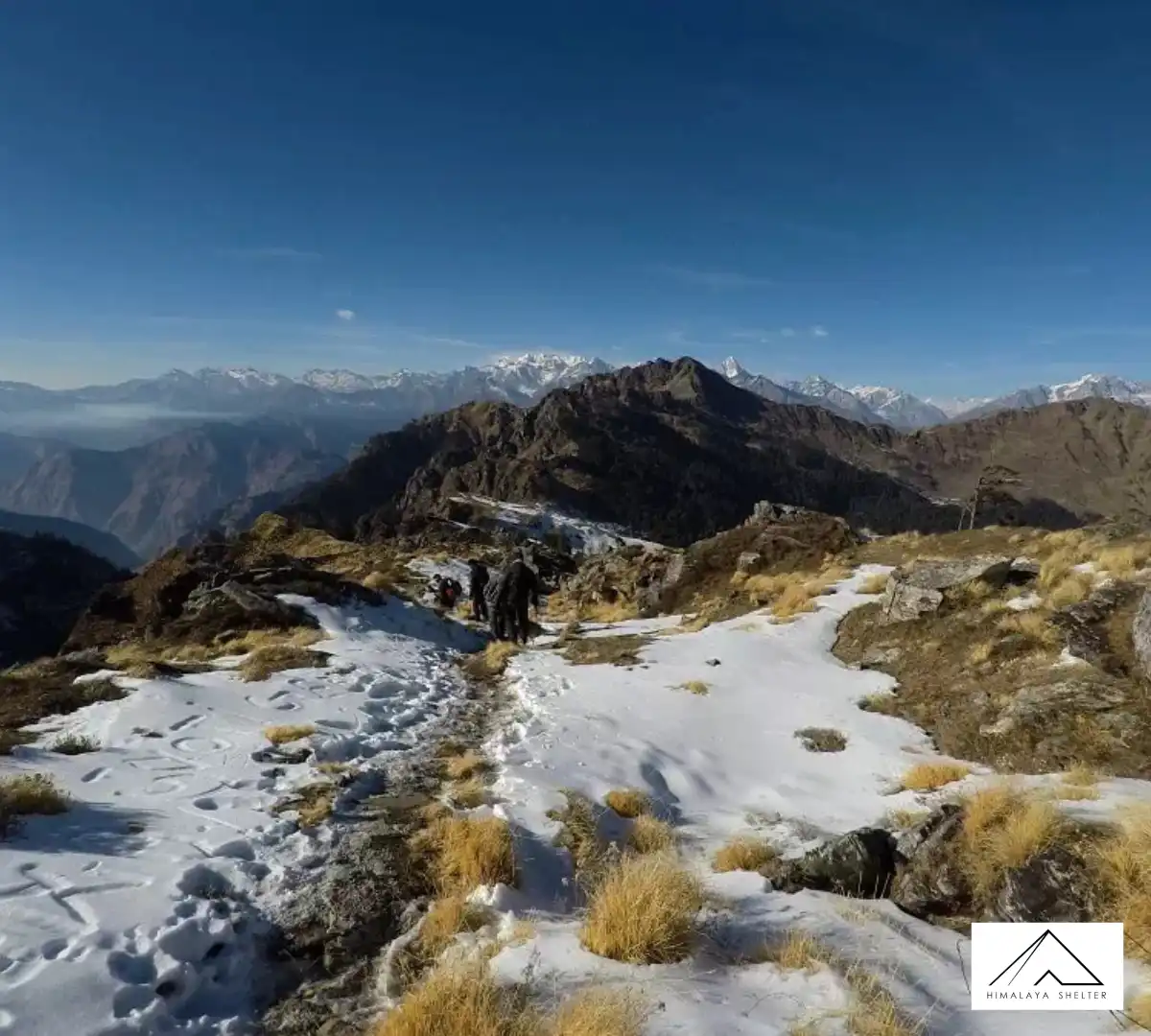
Treks by Categories
Treks By Month

Treks By Experience

